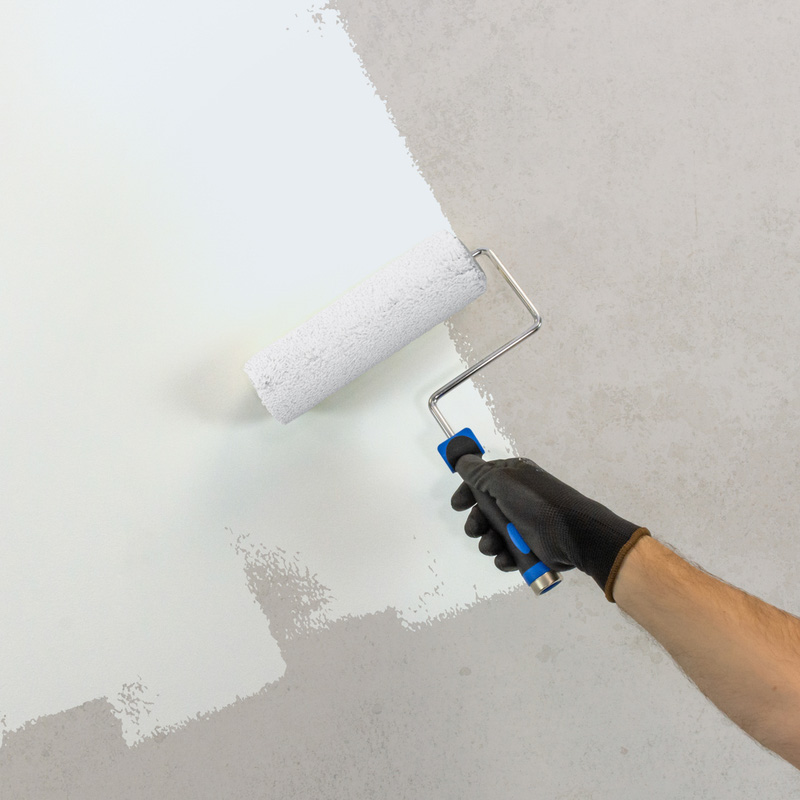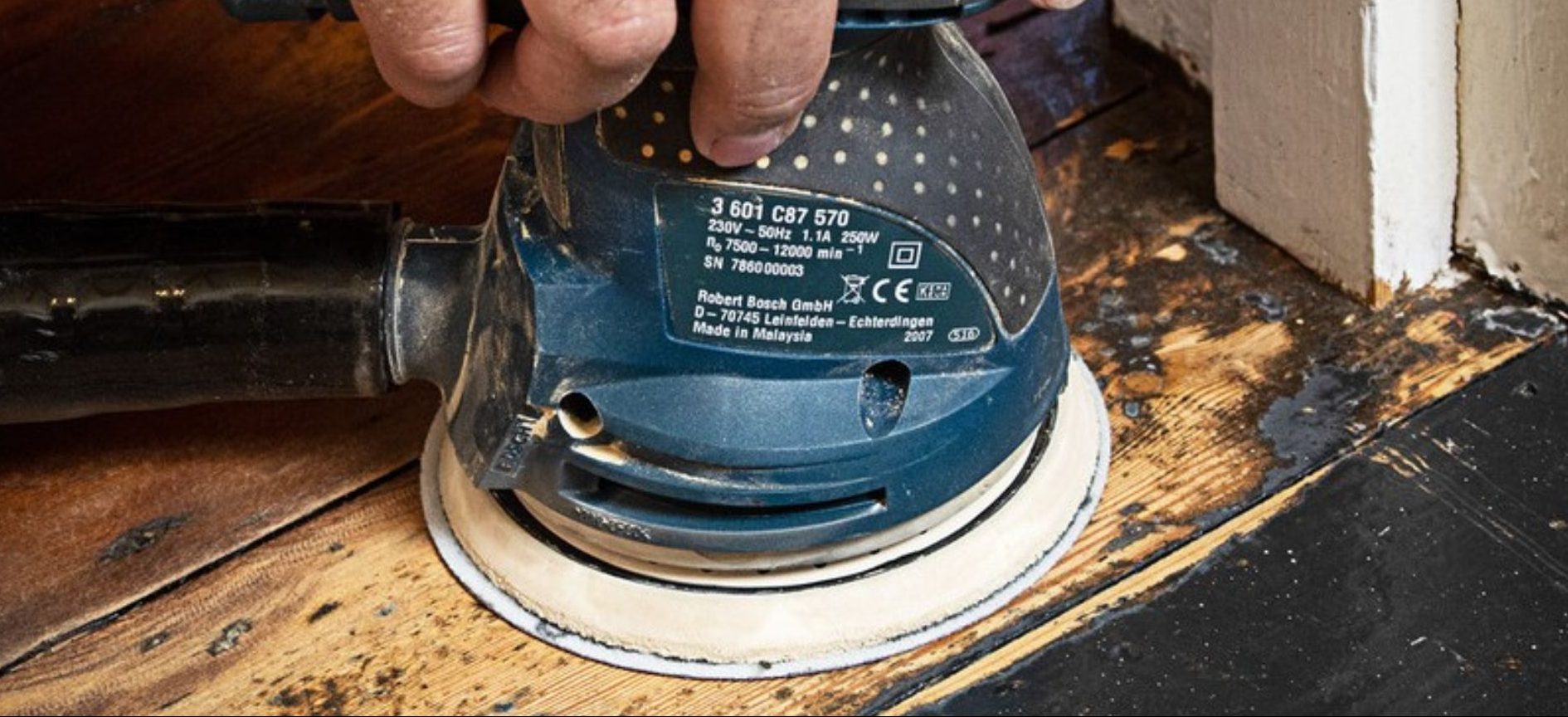Whether you’re giving your bedroom a fresh new look or transforming the exterior of your home, you’ll want to make sure you have the perfect tools for the job. And when it comes to painting and decorating, there’s few tools more important than the paint roller. You’ll find paint rollers with different sleeve materials, fibre lengths and frame types. Each one is suited to different surfaces and projects, both inside and outside.
Roller sleeves with longer fibres, also known as long pile sleeves, are better for more rough or semi-rough surfaces. Medium pile sleeves are ideal for rough-to-smooth surfaces, and short pile sleeves are better for smooth surfaces.
Larger, 9-to-12 inch frames will make light-work of expansive walls, while smaller 4 inch frames are more precise, lightweight and easier to get into tight corners or around window sills. 12 inch frames are most commonly used by tradespeople, and most DIYers will get a good result with a 9 inch frame. You’ll also find double-arm rollers which offer greater stability, as well as adjustable rollers which can be used for sleeves of various sizes.
Types of Paint Roller Sleeves
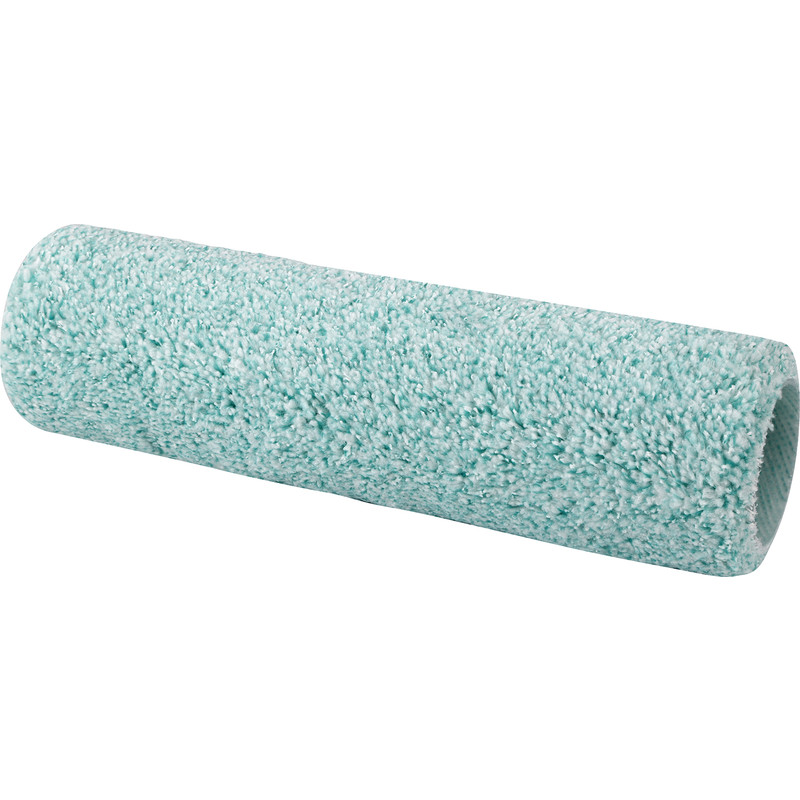
Microfibre Paint Rollers
Microfibre paint rollers are made of very fine fibres of synthetic material, such as polyester or polyamide. They come in different pile lengths so there’s alway a roller to suit each job, but microfibre paint rollers are usually used for smooth and semi-smooth surfaces like walls, cabinets and ceilings.
Highly absorbent, microfibre paint rollers won’t need topping up as often, and will distribute paint extremely evenly – ensuring a smooth finish. They can be washed and reused multiple times meaning they’re fairly environmentally and cost friendly. Thanks to their fine fibres, these rollers are great at holding onto paint – minimising splatter and reducing clean-up times.
Microfibre paint roller sleeves are less suited to rough surfaces such as external walls or some ceilings, as the texture can damage the sleeves’ fibres. You’ll also find that some microfibre paint rollers may deteriorate when using solvent-based paints. Whilst the greater absorption means a better-quality finish, microfibre rollers will need more thorough cleaning to remove the paint.
Advantages
-
Distribute paint evenly
-
Environmentally and cost friendly
-
Reduced splatter
Things to Consider
-
Rough surfaces may damage microfibre sleeves
-
May be damaged by solvent-based paints
-
Thorough cleaning needed to remove all paint
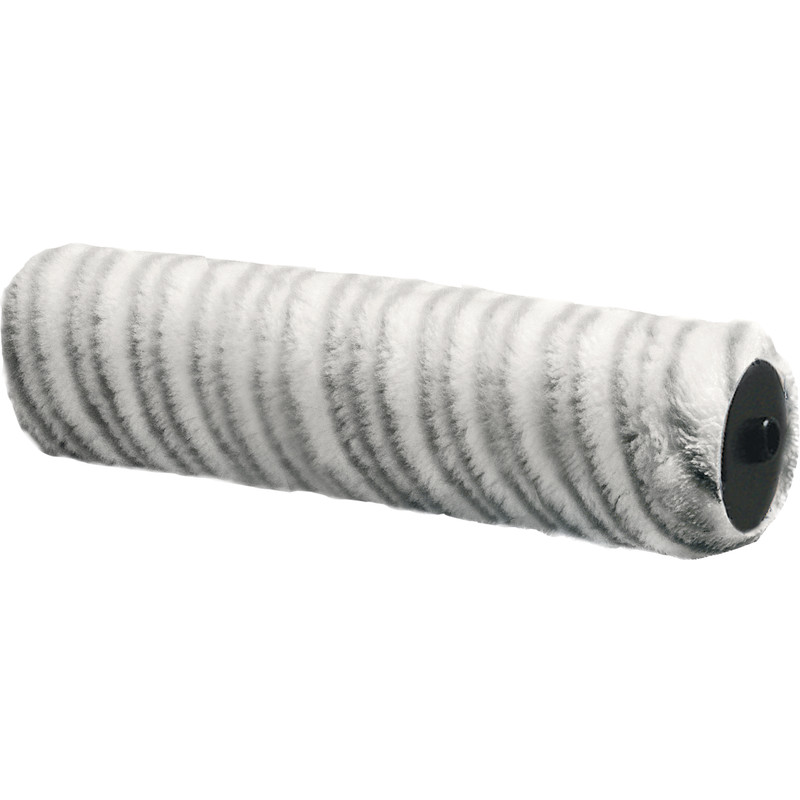
Woven Paint Rollers
Woven paint roller sleeves are made of fibres that have been weaved together, creating a dense fabric that can hold a lot of paint. Typically, natural fibres such as wool or mohair are used – but you’ll find some are made of polyester or polyamide. They are available in different pile lengths, which means woven roller sleeves can be used for a range of projects, but are often used for rough, textured surfaces.
The way these paint rollers are made makes the fibres durable, so they’re suitable for being reused and washed many times. They can also be used with lots of paint types, including water-based and solvent-based paints. Woven roller sleeves can hold lots of paint in the fibres, which can reduce the need to top up the roller regularly.
Woven roller sleeves may splatter more than other types of paint rollers, as the paint can drip off the fibres. Also, you may find that natural fibres may shed during use – but this will happen less if you use a high quality roller and you remove loose fibres before painting. Woven paint rollers are less suited to smooth surfaces as the finish may be uneven.
Advantages
-
Fibres are very durable
-
Suitable for lots of paint types
-
Hold lots of paint in the fibres
Things to Consider
-
More splatter than other sleeve types
-
Natural fibres may shed
-
Less suitable for smooth surfaces
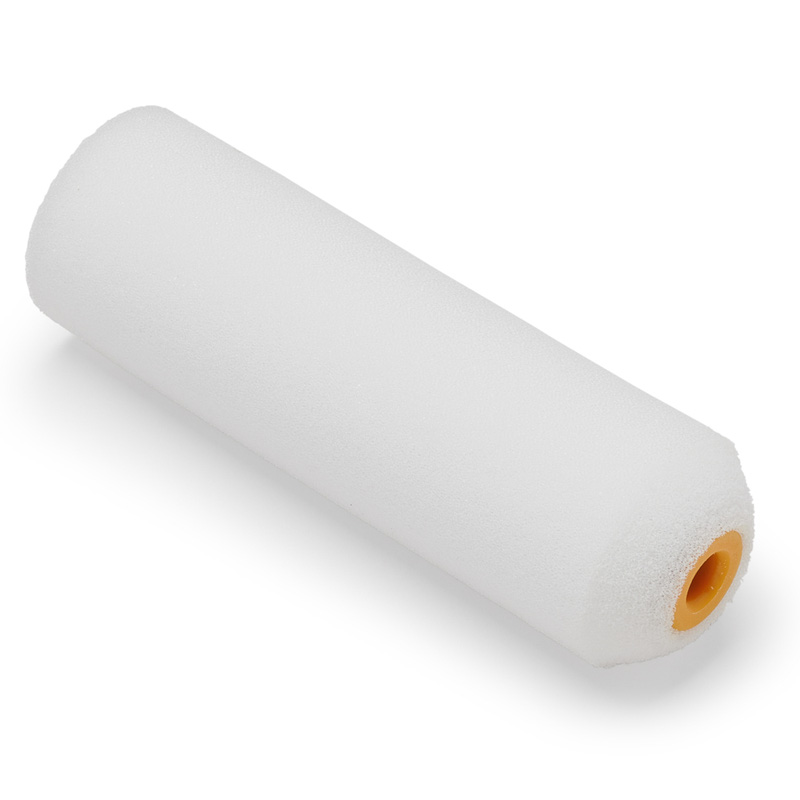
Foam Paint Rollers
Foam paint rollers come in two types: closed-cell foam or open-cell foam. Closed-cell foam paint rollers have sealed air pockets that aren’t connected which make the sleeve more rigid – this is the most popular type. Open-cell foam roller sleeves have small, interconnected air pockets that paint can pass through – they’re flexible and better for delicate projects. Foam paint rollers are used for smooth and semi-smooth surfaces.
Foam paint rollers are very easy to clean and reuse, and will not shed fibres like woven roller sleeves. They offer a smooth and even finish, and are recommended for a range of paint types – even latex paint and oil paints. You’ll find foam paint roller sleeves are generally more affordable than other types of paint rollers, so are a common choice for DIYers.
You may find that foam paint rollers absorb less paint than other sleeve types, meaning they’ll need to be reloaded more frequently. They’re also less durable and may need to be replaced more often – although are perfectly fine to be washed and reused a few times. Foam paint rollers may leave bubbles on the surface if they’re not used properly, and are less suitable for rough surfaces as there are no fibres to get into bumps and cracks.
Advantages
-
Easy to clean and reuse
-
Smooth, even and shed-free finish
-
Affordable and can be used for a range of paint types
Things to Consider
-
Absorb less paint than other types
-
Less durable & less suited to rough surfaces
-
Could leave bubbles on the surface
Types of Paint Roller Frames
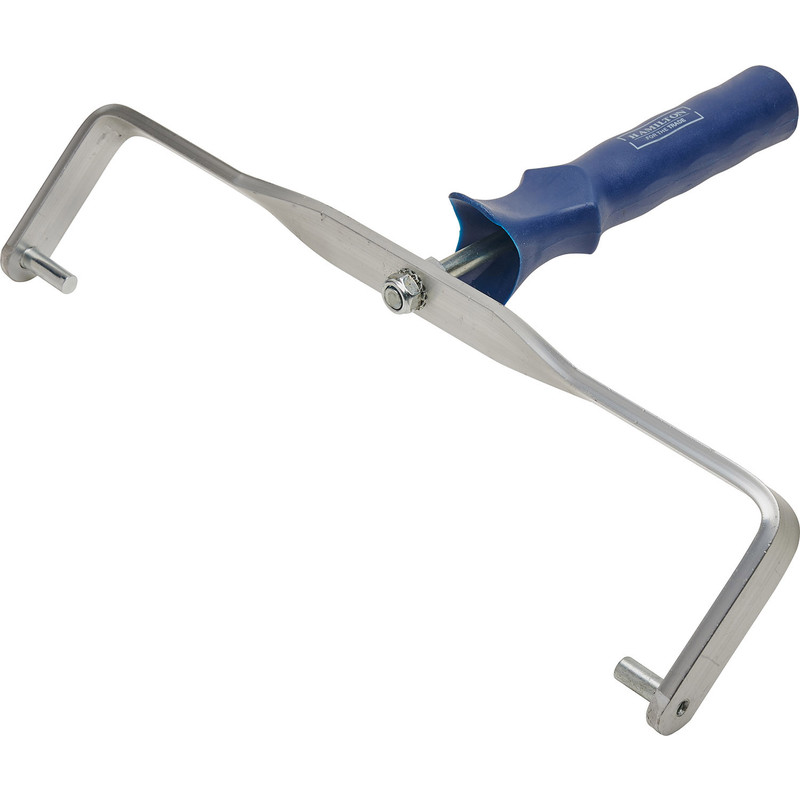
Double-Arm Paint Rollers
Double-arm roller frames have two arms on either side which hold the frame in place with pins or a full width bar. They’re generally 9-to-12 inches long, perfect for standard and large roller frames. Double-arm rollers are usually used by tradespeople for large painting projects, but are DIY friendly too.
The main advantage of double-arm rollers is the extra stability they provide, which can offer a neater, streak-free finish as well as offer extra support for the user during long projects. They’re also durable, as they hold the frame from both sides and are therefore not susceptible to damage. Double-arm rollers are also usually compatible with extension poles.
Double-arm rollers can come with a higher price tag and have a limited availability compared to standard cage rollers, which is why they’re more commonly used by tradespeople. You may also find they have limited flexibility in tighter areas due to the frame taking up space on both sides of the sleeve.
Advantages
-
Extra stability
-
Durable
-
Compatible with extension poles
Things to Consider
-
Higher price tag
-
Limited availability
-
Not as flexible in tight areas

Cage Roller Paint Rollers
Cage roller frames, as the name suggests, have a cage-like design that holds the roller sleeve firmly in place. They’re a standard roller type and you’ll find most cage rollers are 9 inches long. Their size and stability makes them ideal for DIYers and tradespeople carrying out medium-to-large projects.
The structure of cage rollers makes them durable and suited to repeated use, as they’re not susceptible to deforming or becoming damaged over time. Cage rollers are also easy to use – simply slide the sleeve over the frame and it’s completely secure and will offer a neat finish. They’re also widely available and come at a range of price points.
Cage rollers are slightly heavier than traditional frames made of a single piece of metal due to the extra metal work – although the benefits of cage frames mean traditional frames are less common these days. They’re also not compatible with all roller covers, as the sleeve has to fit around the frame.
Advantages
-
Durable and suitable for repeated use
-
Easy to use
-
Widely available and a range of price points
Things to Consider
-
Heavier than traditional frames
-
Not compatible with all roller covers
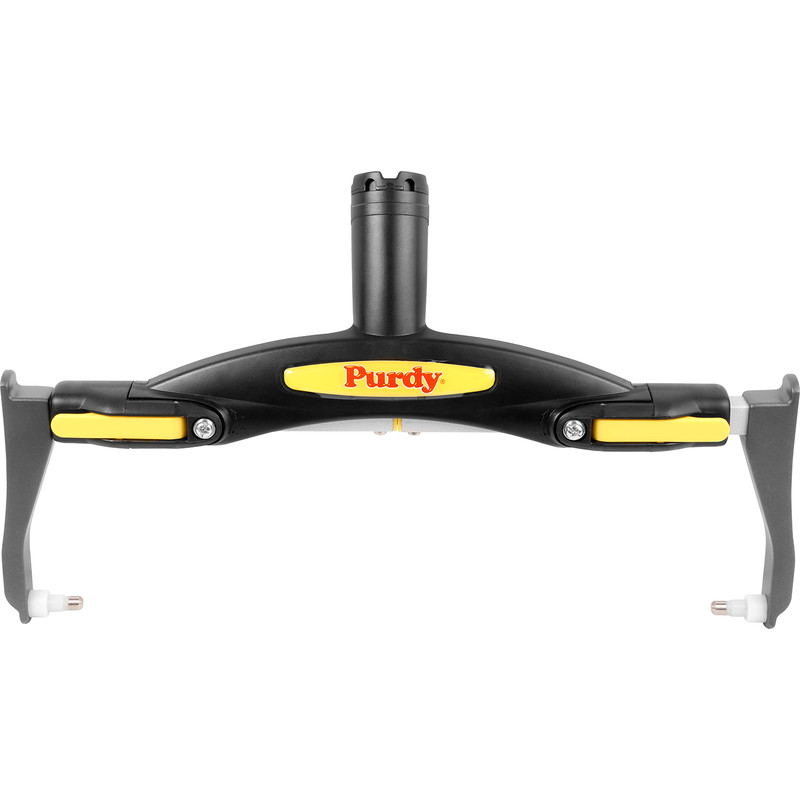
Adjustable Paint Rollers
Adjustable paint rollers allow you to adjust the length of the frame for different sleeves and different tasks, reducing the need for multiple frames. You’ll find frames that can be between 12 and 18 inches, making them ideal for medium-to-large projects. They’re mostly used by professionals looking to cut down the number of tools they carry from job to job.
You’ll find that adjustable rollers are versatile for different projects, sleeves, and are even compatible with extension poles – making them the perfect alternative to many other frames. They’re also highly durable and stable as they secure the sleeve from both sides like double-arm paint rollers.
Adjustable paint rollers are more complex to use than other frames as they need adjusting, and if they’re not secured correctly they could come loose. They also come at a higher price tag than other frame types, due to the fact they reduce the need for multiple tools. Adjustable rollers are also less widely available.
Advantages
-
Reduce the need for multiple tools
-
Highly versatile
-
Double arm makes them secure and durable
Things to Consider
-
More complex to secure
-
Higher price tag
-
Less widely available
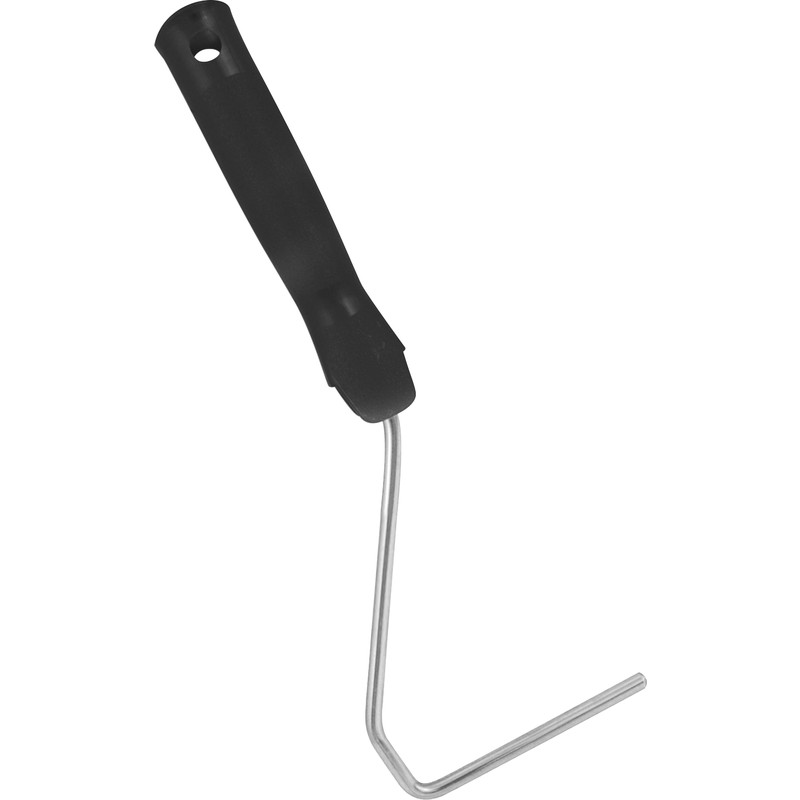
Mini Paint Rollers
Mini rollers are simply small versions of standard frames – a full-width bar made of a single piece of metal going through the length of the sleeve. They’re popular with tradespeople and DIYers alike and are used for smaller areas such as inside cupboards, around window frames, and behind radiators.
You’ll find mini rollers have increased precision for areas that need extra attention to detail, and they’re also lightweight which means the user has greater control. Mini rollers are also affordable and widely available. They often come as part of complete sets, which generally include the frame, a few sleeves, and a paint roller tray – making painting stress-free.
Mini rollers have a smaller coverage area, so they’re only recommended for small jobs – they’re not generally thought of as an alternative for other frame types. They’re also not compatible with larger sleeves or sleeves designed for cage rollers, as they will not offer enough stability. Mini rollers are also not commonly compatible with extension poles.
Advantages
-
Precise and lightweight
-
Affordable and widely available
-
Usually come as all-in-one sets
Things to Consider
-
Not recommended for large projects
-
Not compatible with large sleeves or cage roller sleeves
-
Rarely compatible with extension poles
Key Paint Roller Considerations
Roller Sleeve Pile
The pile of roller sleeves refers to the length and texture of the fibres. Short pile roller sleeves are used for smooth surfaces, while long pile roller sleeves are used for rougher surfaces. This is because the longer fibres will get inside cracks and bumps in the wall.
The longer the roller sleeve pile, the more textured the finish – which will be especially noticeable on smooth surfaces like interior walls.
Extension Poles
Extension poles allow you to reach high places like ceilings and house exteriors without the need for ladders. This instantly makes jobs safer and removes the risk of falling. Extension poles are typically made of aluminium or fibreglass, meaning they’re lightweight and easy to use.
These extension poles simply screw into your existing roller frame, and many types are adjustable, so they can extend to your desired length. You’ll find two main sizes: 0.6m – 1.2m and 1.2m – 2.4m.
Paint Roller & Frame Sets
Roller and frame sets are all-in-one sets, and are especially common for mini rollers. These kits are DIY friendly and can save on costs if you’re a tradie. They mean you’re guaranteed to have the correct size roller sleeve for the frame which means you’ll get a nicer finish.
Most roller and frame sets also include a paint tray, which will be perfectly sized for the roller and make it even easier to complete your project.
Painting Accessories
Whatever your project, painting accessories can give you a neater finish and make the job far easier. Use painters tape or masking tape on the edges to ensure crisp, straight lines. A collection of paint brushes of different sizes can help to neatly paint edges or around switches.
Goggles and other protective workwear can protect your clothes, skin and eyes from damage, while painting sheets are essential to prevent your space getting covered in paint splatters.

